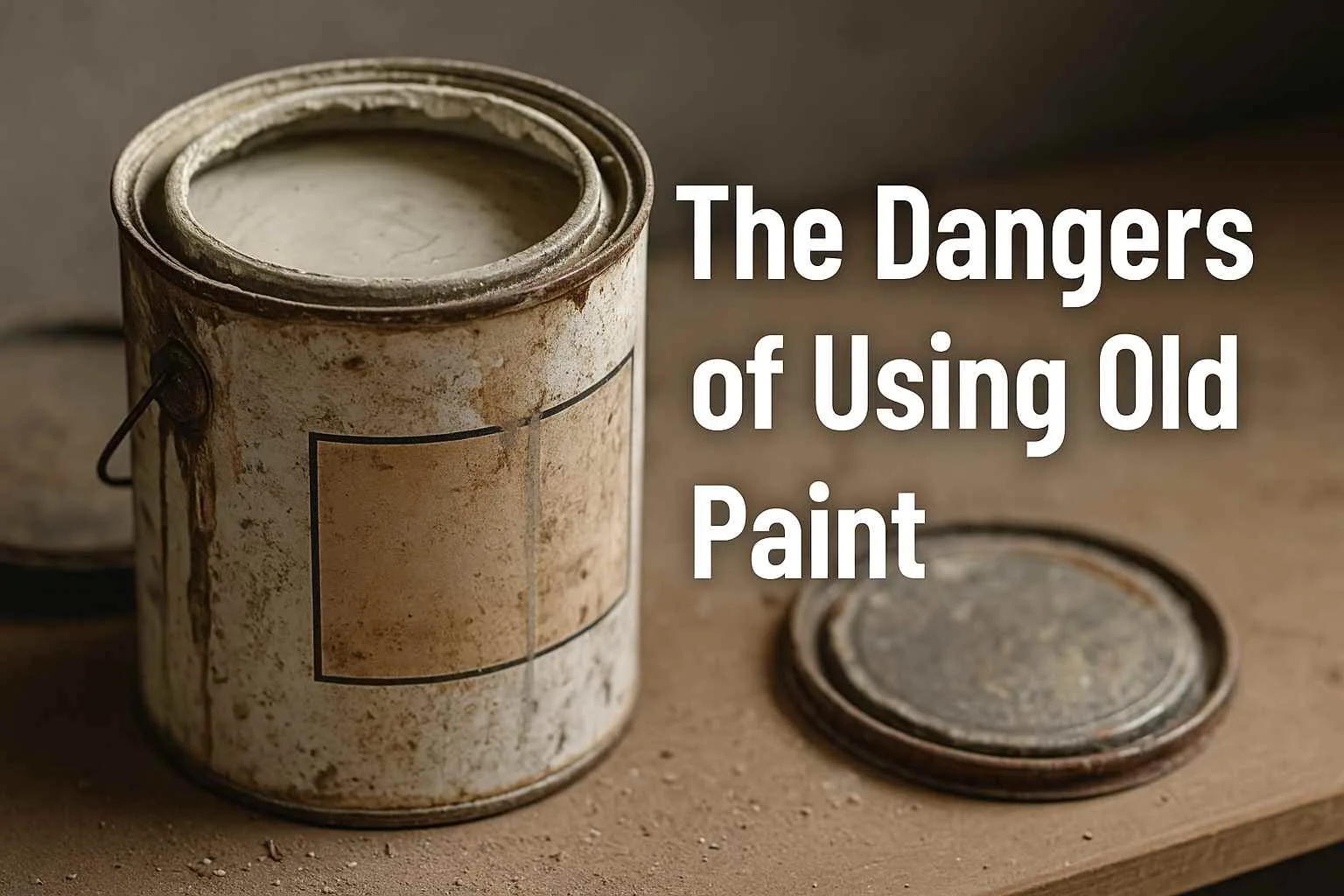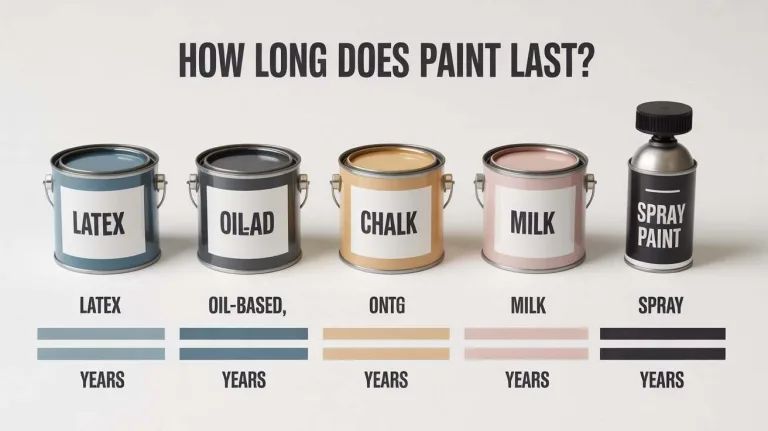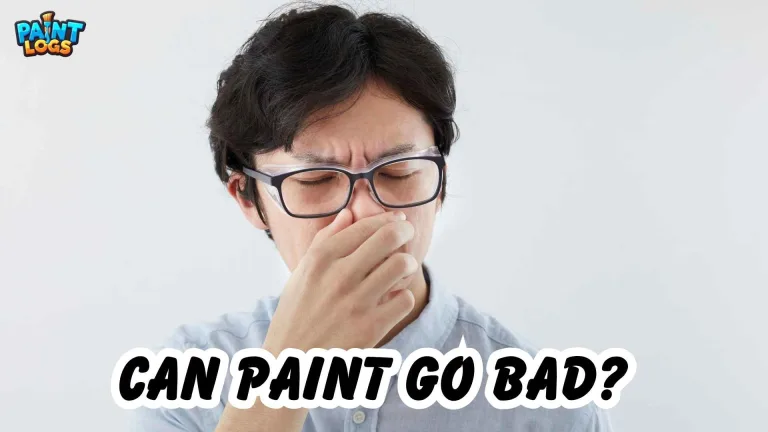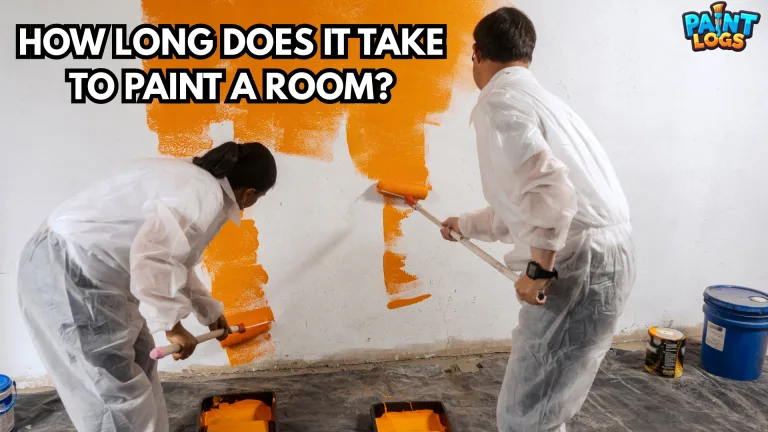You’ve probably opened an old paint can and thought, “It still looks fine — maybe I can use it for touch-ups.”
But here’s the truth: the dangers of using old paint are often hidden. It might look okay at first, but over time, paint changes — it can spoil, grow bacteria, or lose its bonding power.
Using old paint isn’t just about getting poor results on your walls. It can also affect your health, your home, and your wallet.
Let’s break down what really happens when paint gets too old, the risks it brings, and what you can safely do instead.
Why Paint Goes Bad Over Time
Paint isn’t immortal — even if it’s been sitting in a sealed can.
It’s made of pigments, binders, and solvents that eventually break down. Here’s why:
- Air and moisture sneak in once the can is opened.
- Temperature changes — freezing or overheating — destroy the paint’s texture and stability.
- Bacteria and mold can grow inside if the paint was stored in a damp or dirty place.
- Chemicals and oils separate or dry out, leaving behind clumps or a thick skin.
That’s why checking your paint’s condition before use is so important. (You can learn how in our detailed guide: Can Paint Go Bad?)
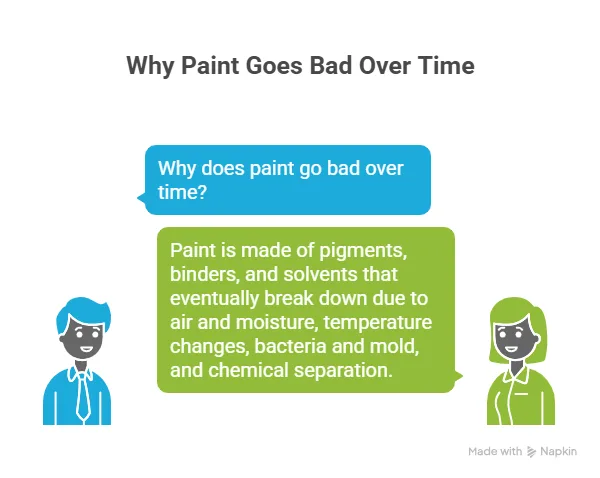
The Hidden Dangers of Using Old Paint
You might think, “What’s the worst that could happen? Maybe the color won’t match perfectly.”
Unfortunately, using old paint can cause health problems, bad odors, and damage that costs more to fix later.
Let’s look at the main dangers one by one.
1. Health Risks: Bacteria, Mold, and Toxic Fumes
When paint sits for years, especially if it’s been opened, it can turn into a breeding ground for bacteria and mold.
Here’s what happens:
- Spoiled paint smells sour or rotten — that odor comes from bacterial activity inside the can.
- When applied, these bacteria and mold spores release volatile organic compounds (VOCs) that pollute your indoor air.
- Breathing in these fumes can cause headaches, dizziness, coughing, and allergic reactions — especially in kids or people with asthma.
Even worse, old paint that contains lead or mercury (common in pre-1978 homes) is hazardous. When it starts flaking or turning to dust, those particles can spread into your air and cause serious long-term health issues.
If you’re ever unsure whether your old paint is safe, don’t risk it — it’s cheaper and safer to buy a new can.
2. Poor Wall Finish and Adhesion Problems
Old paint might look normal in the can but perform terribly on the wall. You may notice:
- Uneven coverage or streaks
- Peeling, cracking, or bubbling
- Sticky, slow-drying surfaces
- Strange oily or powdery residue
These happen because the binders and resins — the parts that make paint stick — break down over time.
That means your “quick touch-up” could end up peeling within weeks.
Pro tip: If you notice dragging or clumping while painting, stop immediately — that’s your sign the paint’s no good.
3. Color Fading or Yellowing
Old paint can lose its original tone even before you open the can.
Over time, pigments settle and oxidize, changing the color. White paint can turn yellowish, and colored paints might dry darker or duller.
So even if it still spreads well, your touch-up might not match your wall anymore — and you’ll end up repainting the whole area anyway.
4. Chemical Breakdown and Higher VOCs
Fresh paint is designed to release very few fumes after it dries. But as paint ages:
- Its chemical balance changes.
- Preservatives weaken.
- VOCs (volatile organic compounds) increase.
That’s why old paint can smell stronger, take longer to dry, and irritate your eyes or throat.
If you’ve ever opened an old can and felt a wave of chemical odor — that’s your cue to close it and toss it.
5. Damage to Surfaces and Materials
Using expired paint can also damage the very surface you’re trying to improve.
When binders fail, paint doesn’t just peel — it can trap moisture underneath. That moisture can lead to:
- Mold on walls or ceilings
- Bubbling or cracking plaster
- Discolored or stained drywall
In woodwork or metal, it may also cause rust or warping because of trapped humidity.

When Old Paint Becomes Dangerous to Keep
Some old paint cans shouldn’t even stay in your home — they can be unsafe to store.
Here’s what to watch for:
- Bulging can or lid → pressure buildup from bacteria inside
- Rusting or leaking seams → contamination risk
- Hardened paint → can’t reseal properly
- Strong rancid odor → bacterial gas buildup
A swollen can is like a food can that’s gone bad — don’t try to open it.
Instead, follow safe disposal methods (we’ll cover that shortly).
How to Tell If Paint Is Still Safe to Use
Sometimes, old paint isn’t totally gone — it might still be usable for a small job if it passes a few simple checks:
- Smell it — sour, musty, or rotten smell = bad.
- Stir it — if it mixes smoothly and looks even, that’s good.
- Check for mold — any spots, fuzz, or film = toss it.
- Test it — brush on a little cardboard; it should spread smoothly and dry evenly.
If it fails any of these tests, dispose of it safely. You can find full testing steps here: Can Paint Go Bad?
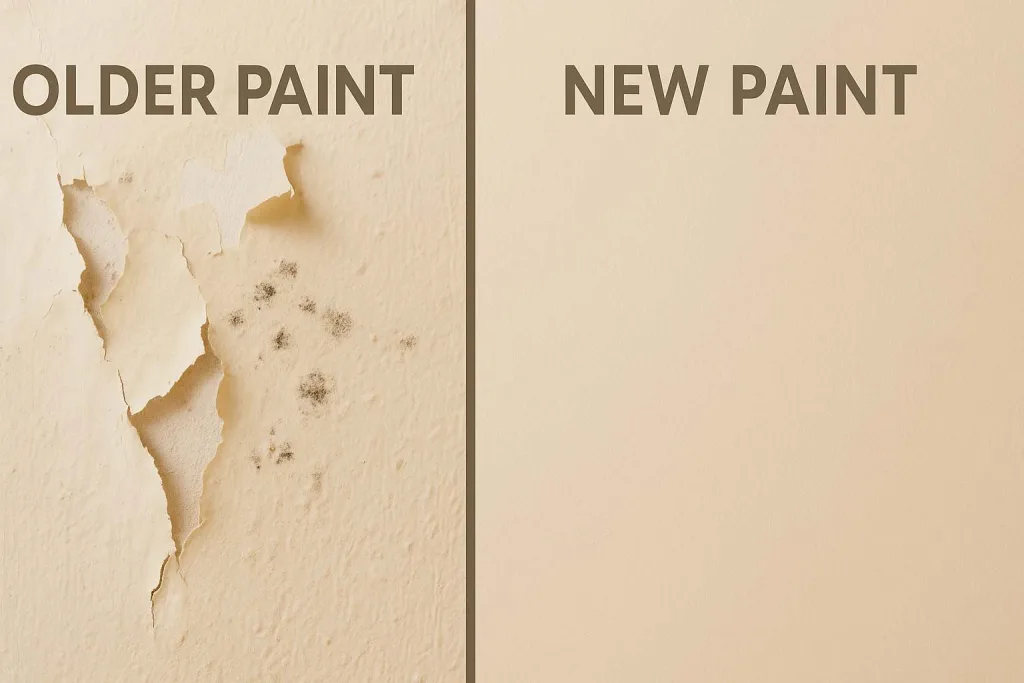
Environmental and Safety Concerns
Pouring paint down the drain or tossing it in the trash is a big no-no.
Liquid paint can pollute groundwater and harm wildlife.
Instead:
- Dry out small amounts using cat litter or paint hardener before throwing away.
- Take oil-based paints to a local hazardous waste facility.
- Check if your area supports PaintCare or recycling drop-off programs.
Responsible disposal protects your home — and your environment.
Legal and Warranty Issues
If you’re a contractor or landlord, using old paint can void warranties and even lead to legal issues if peeling or fume complaints occur.
Manufacturers won’t back performance failures caused by expired materials.
When in doubt, document the paint batch and purchase date — it’s a small step that protects you from costly callbacks.
For official guidelines on how to safely dispose of leftover or expired paint, visit the U.S. Environmental Protection Agency’s household hazardous waste page.
What If You Have to Use Slightly Old Paint?
Maybe your paint is just a year or two old and still looks okay.
If you decide to reuse it for a small job:
- Test it on a hidden area first.
- Make sure the room is well-ventilated (see our guide on Paint Fume Safety and Ventilation).
- Wear gloves and a mask if it smells off.
- Don’t use it in bedrooms, nurseries, or small closed rooms.
If the paint behaves oddly or smells bad once applied, stop and discard it immediately.
When to Replace, When to Reuse
| Paint Type | Safe Lifespan (Opened) | Signs It’s Bad |
|---|---|---|
| Latex / Acrylic | 2–5 years | Sour smell, lumps, separation |
| Oil / Alkyd | 5–10 years | Thick skin, strong fumes |
| Chalk / Mineral | 1–2 years | Dry, crusty surface |
| Spray Paint | 2–5 years | Clogged nozzle, uneven spray |
When paint passes its prime, replacing it ensures better results — and cleaner, healthier air in your home.
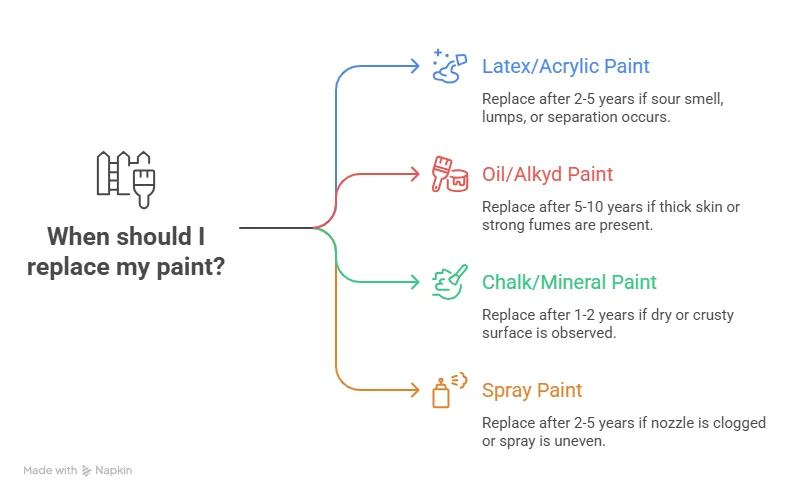
Conclusion: Don’t Gamble With Old Paint
Old paint might seem harmless — but behind that lid could be spoiled chemicals, bacteria, and fumes you don’t want in your home.
Fresh paint will always give you better color, smoother walls, and safer air.
So before using what’s in that old can, check it carefully. And when in doubt?
Throw it out — or better yet, recycle it.
FAQs
Does paint really expire?
Yes. Paint has a limited lifespan. Even unopened cans can expire after several years — about 8–10 years for latex and up to 15 years for oil-based. Once opened, air and moisture speed up the aging process.
How can I tell if paint has gone bad?
Smell and texture are your best clues.
If the paint smells sour, moldy, or rotten, or has thick lumps, separation, or fuzz on top, it’s gone bad. Stirring should make it smooth — if not, toss it.
Can using old paint make you sick?
Yes. Spoiled paint can grow bacteria and mold that release harmful fumes (VOCs). Breathing those in can cause headaches, coughing, nausea, or dizziness, especially in rooms without ventilation.
What happens if I paint with expired paint?
You’ll likely get uneven color, streaks, peeling, or a sticky finish that never dries properly. Even if it looks okay at first, it usually fails quickly and will need repainting.
Can old paint be revived or reused?
Only if it passes the smell and texture test. If it smells fine, mixes smoothly, and looks even, it might still work for small projects. But sour, moldy, or chunky paint is not safe to reuse.
Is it safe to mix old and new paint together?
No. Mixing old and new paint can ruin the texture, color, or drying time — and could contaminate your fresh paint. Always use clean, fresh paint for the best results.
How long does opened paint last?
Latex or acrylic paint: 2–5 years
Oil-based paint: 5–10 years
Keep it sealed tightly and stored indoors at a stable temperature to make it last longer.
Why does old paint smell so bad?
That sour, rotten smell comes from bacteria growing inside the can. The paint might look fine, but once applied, that smell will fill your room and is almost impossible to remove.
Can old paint damage walls?
Yes. Old paint loses adhesion and can cause bubbling, peeling, and uneven color. It may also trap moisture, which can lead to mold growth behind the paint layer.
Can I use old paint outside instead of indoors?
It’s still risky. Sunlight, heat, and rain make old paint fail even faster outdoors. It can crack, fade, or peel within weeks. Always use fresh exterior paint for outdoor surfaces.

